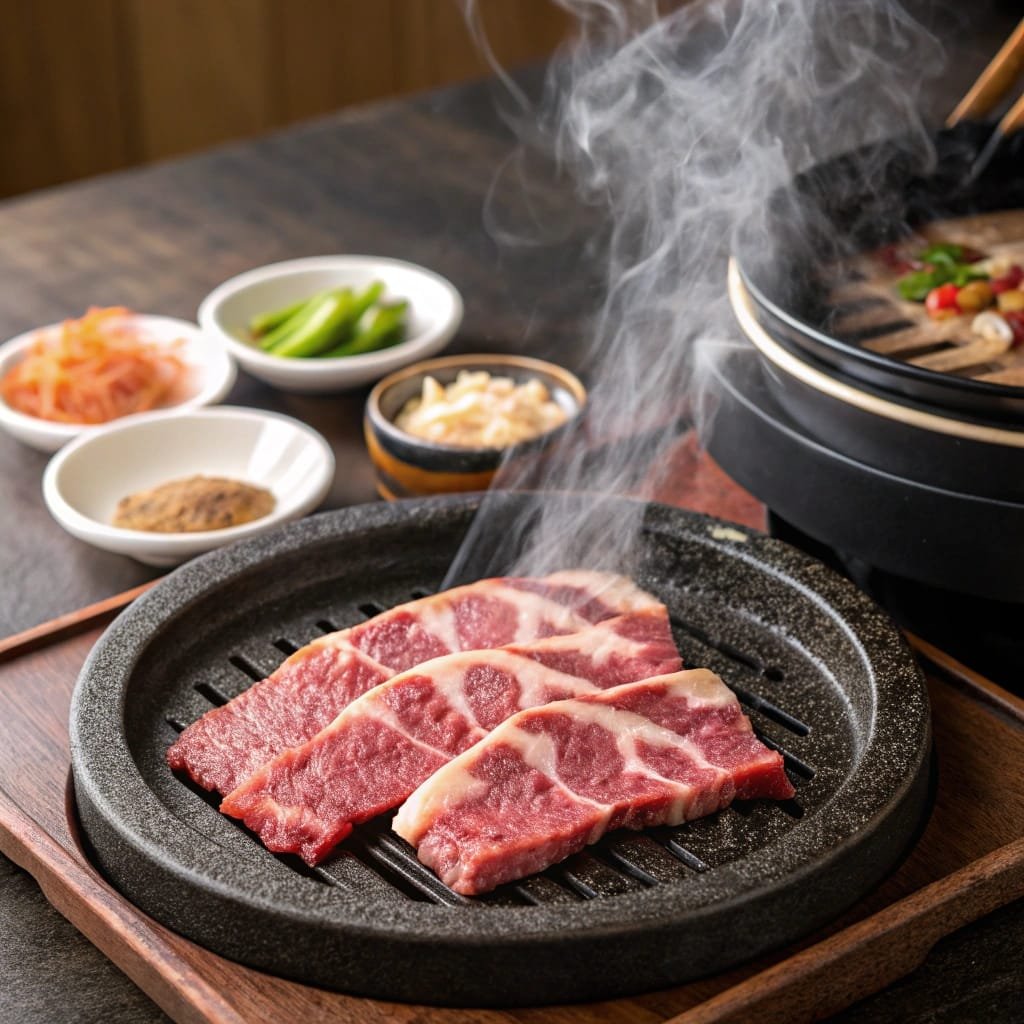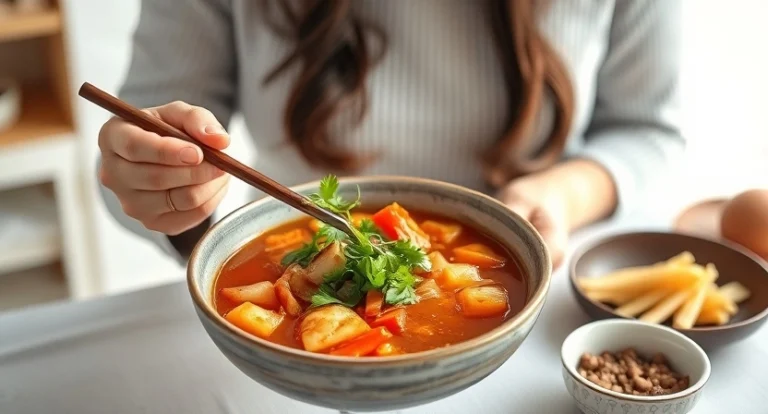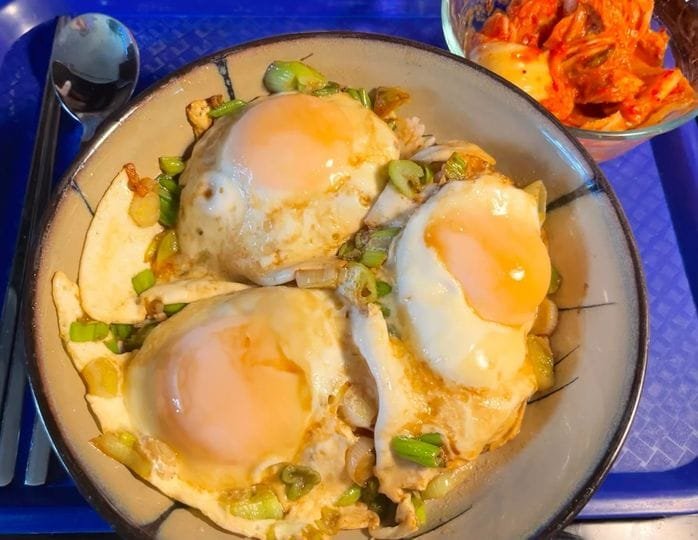Bulgogi: A Savory Korean BBQ Guide
A deep dive into Bulgogi, exploring its flavors, preparation, and cultural significance. This guide provides everything you need to make this Korean staple.
Bulgogi, often referred to as “Korean BBQ,” is more than just a meal; it’s an experience. This delightful dish, known for its savory-sweet flavors, has captivated taste buds worldwide. But what exactly is bulgogi, and how can you make it at home? In this comprehensive guide, we will take a delicious dive into all aspects of this iconic Korean cuisine, ensuring that you, too, can master the art of bulgogi. From the selection of the right meat to mastering the marinade and cooking techniques, get ready to embark on a culinary journey that will bring the vibrant flavors of Korea to your kitchen. Let’s explore what makes this dish so special and how to create it with confidence.
What is Bulgogi? Unveiling the Korean BBQ Staple
At its core, Bulgogi is a traditional Korean dish featuring thinly sliced marinated meat, most often beef, that is grilled or pan-fried to perfection. Therefore, it is a staple on the Korean table, loved for its delicious blend of sweet, savory, and slightly nutty notes. The name “Bulgogi” (불고기) literally translates to “fire meat,” referring to its original method of cooking over an open flame. This fire meat, as it were, evolved from an old traditional grilling method to now include different cooking methods such as pan frying. However, the essence remains the same: succulent meat, bursting with flavor. The essence of Bulgogi lies in the perfect balance of its core elements: quality meat, a flavorful marinade, and proper cooking technique, all harmonizing to create a memorable culinary experience.
The Star of Bulgogi: Choosing the Right Meat
While the marinade is crucial, the meat is equally important for a great Bulgogi dish. Traditionally, the meat of choice is beef, with cuts like ribeye, sirloin, and tenderloin being the most preferred due to their tenderness and flavor. These cuts, therefore, offer a rich, melt-in-your-mouth experience. Furthermore, it’s important to understand that, while beef is the standard, various other protein options are suitable for bulgogi as well. For example, pork bulgogi, known as Dwaeji Bulgogi, offers a different flavor profile, often spicier. In addition, chicken bulgogi, or Dak Bulgogi, is also a popular alternative, providing a lighter option. Moreover, some vegetarian and vegan alternatives can be made using tofu or mushrooms for example. These can all be incredibly tasty and also suitable for making this recipe!
However, regardless of the chosen meat, the key is thin slicing. Indeed, thin slices ensure that the meat marinates properly, absorbs the flavors, and cooks quickly and evenly. Preparing the meat, therefore, includes partially freezing it before slicing to get those perfectly thin cuts. This is the ideal way to get the meat prepped.
Alternative Protein Choices for Bulgogi
As we mentioned previously, there are a plethora of alternative protein options available for Bulgogi. Moreover, these can provide different flavor profiles and cater to different preferences.
- Pork Bulgogi (Dwaeji Bulgogi): This version often uses pork shoulder or belly, known for its rich flavor. Furthermore, it’s often marinated with a slightly spicier mix than traditional beef Bulgogi.
- Chicken Bulgogi (Dak Bulgogi): Chicken thighs or breasts are used for this variation, providing a lighter option. Therefore, this can be a great alternative for those who prefer poultry.
- Vegetarian/Vegan Bulgogi: Tofu or various mushrooms (like oyster mushrooms) make great plant-based substitutes. Moreover, they are amazing at absorbing the marinade flavors and providing a similar texture to meat.
The Magic of the Bulgogi Marinade: Unlocking Flavor
The Bulgogi marinade is where the true magic happens. The marinade transforms the meat from ordinary to extraordinary, imbuing it with a complex blend of flavors. The marinade is the key to that succulent flavor that makes bulgogi so irresistible. Moreover, a well-balanced marinade is the most important element to achieving an amazing dish.
Core Components of the Marinade
The base of a typical bulgogi marinade consists of several fundamental ingredients:
- Soy Sauce: This serves as the salty base, bringing that umami flavor essential to the marinade. Therefore, high-quality soy sauce is key.
- Sugar: Sugar provides the necessary sweetness that balances the saltiness of the soy sauce and gives the meat a lovely caramelization as it cooks. In addition, it helps create a beautiful glaze on the meat.
- Sesame Oil: This adds a rich, nutty flavor that is characteristic of Bulgogi. Moreover, sesame oil also lends a fragrant aroma to the dish.
- Garlic: An essential element, garlic provides that pungent, aromatic kick that forms the foundation of the marinade. Therefore, do not skimp on garlic.
- Ginger: Provides warmth and a slight zesty kick that elevates the taste of the bulgogi. In addition, fresh ginger makes a big difference
- Black Pepper: A very important element to provide the right amount of spice and balance out the other components of the dish. Moreover, freshly cracked is preferred.
Optional Additions to Enhance the Marinade
In addition to the core components, many recipes also include:
- Pear or Apple: These not only add a subtle sweetness but also contain enzymes that act as natural meat tenderizers. Therefore, using grated fruit can make the meat very tender.
- Onion: Onion is important to add an extra layer of depth to the bulgogi. Moreover, it adds a unique sweetness.
- Mirin, Rice wine, or Sake: These add an extra layer of umami and sweetness, enhancing the depth of the marinade. Furthermore, they also contribute to the tenderness of the meat.
The Importance of Marinating
The marinating process is crucial as it allows the meat to absorb all the wonderful flavors of the marinade. Therefore, it’s important to allow the meat ample time to marinate. Ideally, the meat should marinate for at least 30 minutes, but for the best results, marinating for a couple of hours, or even overnight, is recommended. Moreover, make sure you use a non-reactive container, such as a glass or ceramic bowl, to avoid any unwanted flavors. It’s also best to store it in the refrigerator.
Cooking Bulgogi: Mastering the Heat
Once the meat has marinated, it’s time to get cooking. There are a couple of main cooking techniques:
Traditional Grilling
Traditionally, bulgogi is grilled over hot coals, adding a smoky, charred flavor. However, this method is more suitable for outdoor cooking. If grilling, ensure that the grill is hot before adding the meat, which will allow for nice caramelization. Moreover, you will want to use direct fire.
Pan Frying
However, the most common method for home cooks is pan-frying. To do this, heat up a skillet (cast iron is preferred for even heat distribution). Add a bit of oil or cooking spray, and then add your marinated meat. Make sure that you don’t overcrowd the pan; instead, cook in small batches, which allows the meat to caramelize properly. Therefore, doing this is very important for good quality bulgogi.
Cooking Time and Texture
Bulgogi cooks very quickly due to its thin slices. Therefore, you will only need to cook for a few minutes per side or until the meat is nicely browned and cooked through. Moreover, the ideal texture is tender and slightly caramelized. Overcooking it will make it dry and tough. You need to make sure that the meat is cooked through.
Serving Bulgogi: A Feast for the Senses
Serving bulgogi is all about creating a communal and flavorful experience. While the dish on its own is amazing, there are a plethora of accompaniments that help elevate the dish to the next level.
Traditional Korean Accompaniments
Typically, Bulgogi is served with:
- Steamed Rice: Rice acts as the neutral foundation and helps absorb the flavors of the bulgogi. Therefore, rice is a must-have for any bulgogi experience.
- Lettuce Wraps (Ssam): It is common to wrap the bulgogi in crisp lettuce leaves, adding a fresh, crunchy element to the meal. Furthermore, it’s common to add other ingredients within the wraps.
- Kimchi: A variety of kimchi types is always present at the Korean table, adding a spicy, tangy kick. In addition, this is a great way to balance the other components of the dish.
- Banchan: A variety of other side dishes are commonly served with Bulgogi. These may include seasoned spinach, pickled radishes, and other vegetable-based side dishes. Therefore, these add different flavors and textures to the meal.
Modern Serving Ideas
Additionally, bulgogi is incredibly versatile and can be incorporated into many other dishes, including:
- Banh Mi Sandwiches: Bulgogi makes a great filling for a Banh Mi sandwich, providing a sweet and savory filling.
- Tacos and Quesadillas: The savory and sweet flavor is perfect in tacos and quesadillas and gives it a unique twist.
- Over Noodles: It can be stir-fried with noodles for a quick and satisfying meal.
- In Salads: Bulgogi can add a delicious element to a salad.
Presentation
Present your Bulgogi attractively by arranging it on a plate with the sides you have chosen. Therefore, a garnish of chopped green onions and sesame seeds is a great addition.
Tips for the Best Bulgogi: Success Every Time
To ensure you always get the best result with your bulgogi, here are some tips. Firstly, always choose good quality cuts of meat. Secondly, always marinade your meat properly. Thirdly, cook the meat in small batches and use high heat to ensure you caramelize the meat.
- Meat Prep: Thin slicing is crucial. You will also want to make sure to remove as much extra fat as you can.
- Marinade Prep: Mix your marinade very well, ensuring all the ingredients are mixed together. Therefore, you need to get a uniform mixture.
- Cooking Tips: Use high heat, cook in small batches, and avoid overcooking.
- Storage: Leftover bulgogi should be stored in an airtight container in the refrigerator. It is best used within 2-3 days.
- Adjust to your liking: You can always adjust the marinade components to adjust for any flavors you may like better.
Bulgogi Around the World: Global Adaptations
Bulgogi’s popularity has spread globally, and the dish can be found in a variety of forms. Moreover, various countries have taken the base dish and adapted it to suit local tastes. This demonstrates just how flexible the dish is and how much people enjoy it!
Health Benefits and Considerations: A Balanced Approach
Bulgogi, when prepared with lean meat and moderate amounts of sugar, can be part of a balanced diet. Therefore, it’s very important to make sure you balance your meal with sides. Additionally, you need to be aware of your personal health conditions when choosing to eat this dish.
- Nutritional Value: Bulgogi is a good source of protein. However, it is also important to be aware of sodium content due to soy sauce.
- Health Considerations: You can make it healthier by reducing the amount of sugar or sodium. It’s also better to use lean cuts of meat and limit oil use.
- Allergies Make sure to always cater to any food allergies when cooking. Soy sauce, sesame oil, and some fruits in the marinade can be common allergens.
Step-by-Step Recipe: Making Bulgogi at Home
Here is a detailed recipe so you can make this dish at home.
Ingredients:
- 1 lb beef ribeye, sirloin, or tenderloin, thinly sliced
- ¼ cup soy sauce
- 2 tablespoons sugar
- 1 tablespoon sesame oil
- 2 cloves garlic, minced
- 1 teaspoon grated ginger
- ¼ teaspoon black pepper, freshly cracked
- 1/2 pear, grated
- 1/4 onion, grated
- Optional: 1 tablespoon mirin, rice wine or sake
- Optional: green onions, sesame seeds for garnish
Instructions:
- Prepare the Meat: Partially freeze the meat for 15-20 minutes to make slicing easier. Cut the meat into thin slices against the grain, around 1/8 inch thick.
- Prepare the Marinade: In a bowl, combine the soy sauce, sugar, sesame oil, minced garlic, grated ginger, pear, onion, and black pepper. If using, add the mirin, rice wine or sake. Mix well.
- Marinate the Meat: Add the thinly sliced beef to the marinade, ensuring all pieces are well coated. Cover and marinate in the refrigerator for at least 30 minutes, ideally for 2 hours, or up to overnight for maximum flavor.
- Cook the Bulgogi: Heat a skillet or grill pan over medium-high heat. Add a little oil to the pan. Cook the marinated meat in small batches, without overcrowding the pan, for 2-3 minutes per side, or until it is cooked through and caramelized.
- Serving and Presentation: Serve hot with steamed rice, lettuce wraps, kimchi, and other preferred side dishes. Garnish with chopped green onions and sesame seeds.
Troubleshooting:
- Dry meat Ensure not to overcook the meat. Make sure that the meat is thinly sliced.
- Over sweet marinade Adjust the sugar to your preferences
Nutritional Information (per 100g):
| Nutrient | Amount |
| Calories | 200-250 |
| Protein | 15-20g |
| Fat | 10-15g |
| Carbohydrates | 8-12g |
| Sodium | 500-800mg |
Please note: Nutritional values may vary based on specific ingredients and cooking method.
Conclusion: A Savory Journey
Bulgogi is much more than a simple dish; it’s a culinary journey that offers a rich blend of flavors and traditions. It is very flexible and can be enjoyed in many ways. With the right ingredients and techniques, you can bring the taste of authentic Korean BBQ to your home kitchen. So, what are you waiting for? Grab your ingredients and enjoy a delicious meal.
FAQ Section:
Frequently Asked Questions about Bulgogi
What sides go well with bulgogi?
Bulgogi traditionally pairs well with steamed rice, a variety of kimchi (such as cabbage kimchi or radish kimchi), and other Korean side dishes (banchan), like seasoned spinach, pickled radishes, and various vegetable salads. Moreover, lettuce leaves are often provided for wrapping the bulgogi with rice and other sides. These sides all help complement the richness of the bulgogi, enhancing your dining experience.
What is traditionally served with bulgogi?
Traditionally, bulgogi is served with steamed rice, kimchi, banchan, and lettuce for wraps. Additionally, you often see a soybean paste soup or stew as well. These components, therefore, create a balanced and complete Korean meal. These pairings are a staple of the Korean culinary tradition.
What do Koreans serve with bulgogi?
Koreans typically serve bulgogi with various kimchi, an assortment of banchan, and steamed rice. They use lettuce leaves or perilla leaves for making wraps with all components. This is considered the traditional way to enjoy the dish. Each component enhances the overall flavor and provides variety.
What is the recommended meat for Bulgogi?
The most recommended beef cuts for Bulgogi include ribeye, sirloin, and tenderloin due to their tenderness and flavor. It’s also important to thinly slice the meat. This will help to ensure it absorbs the marinade flavors, cooks quickly, and is succulent. Therefore, the best cuts are also the best options for Bulgogi.








